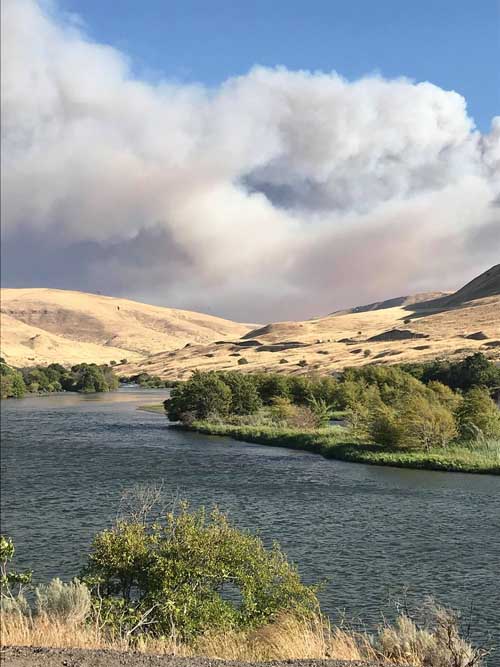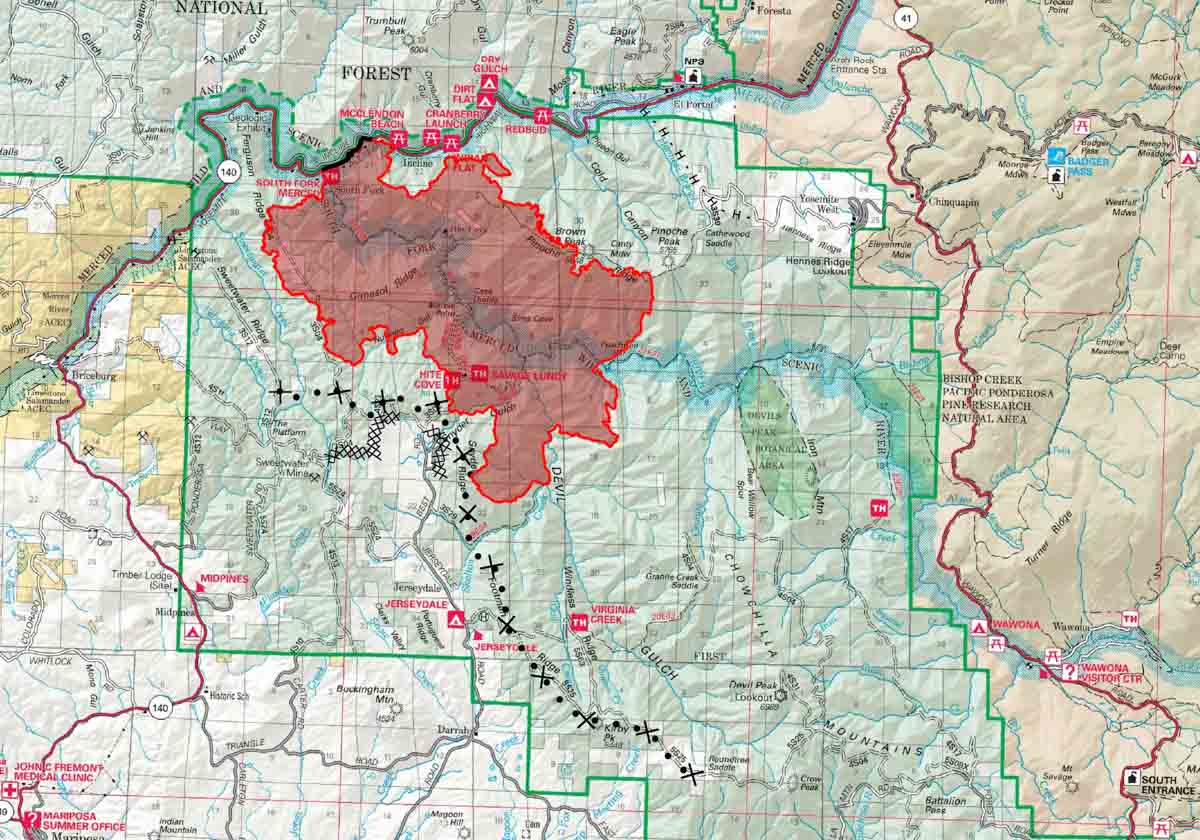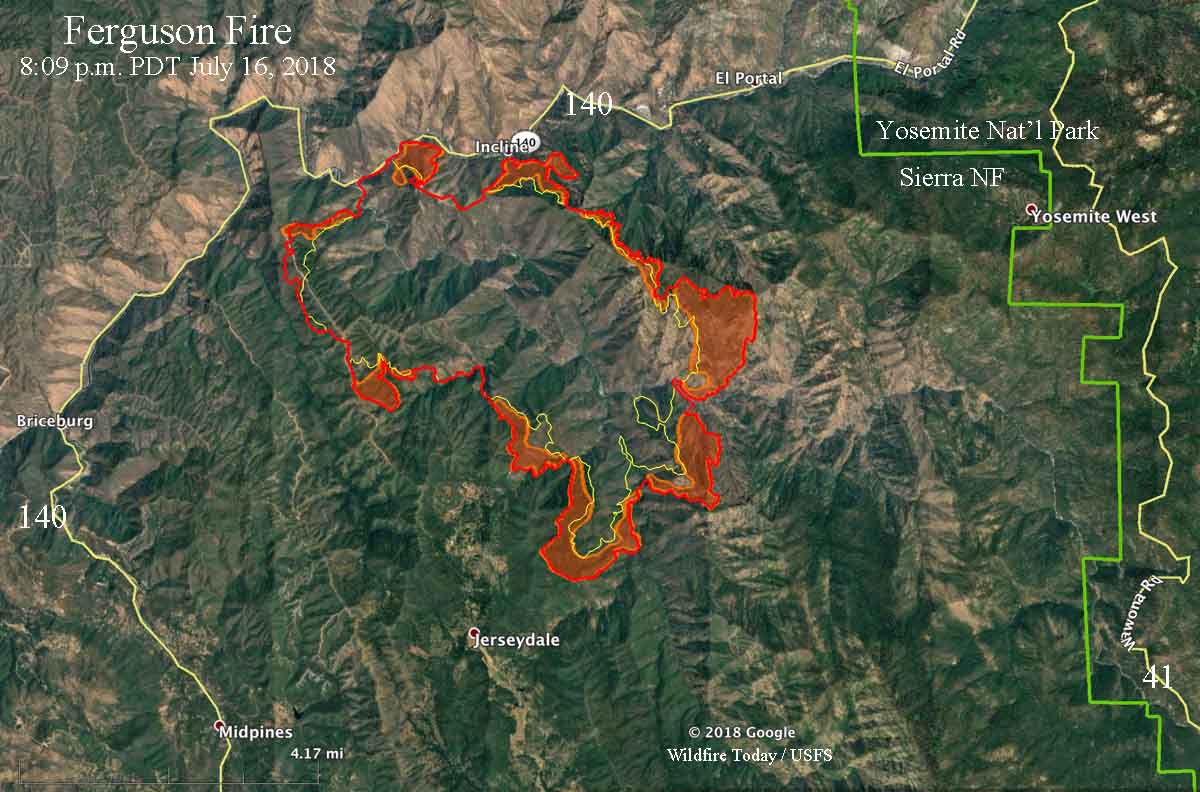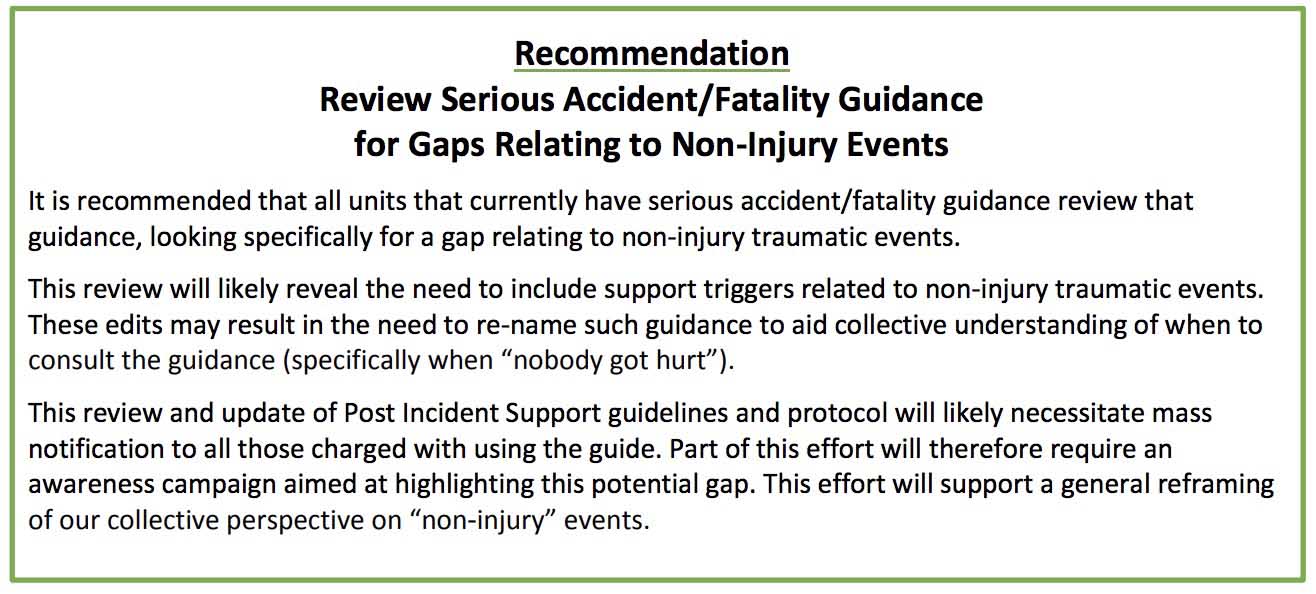Above: The red dots represent wildfire heat in Oregon detected by a satellite at 3:34 a.m. PDT July 18, 2018.
(Originally published at 3:56 p.m. PDT July 18, 2018)
Thunderstorms over the weekend have created a great deal of work for firefighters in Oregon. At least 163 wildfires were detected in the state after 2,800 lightning strikes peppered the area since Friday. By Wednesday morning the numbers have settled down to 47 fires that have burned over 22,000 acres, according to the Department of Forestry Wednesday morning. However since those numbers were released the Substation Fire (see below) has been mapped at 36,000 acres. Dozens of fires are burning in the southwest corner of the state on the Umpqua, Rogue River, Winema, and Siskiyou National Forests.
The lightning was predicted days in advance. Many of the land management agencies proactively imported additional firefighting resources to deal with the anticipated workload following the lightning bust.
In Central Oregon firefighters are battling the 1,300-acre lightning-caused Cemetery Fire 12 miles southwest of Paulina. It started July 16 and is burning on the Ochoco National Forest and lands protected by the BLM and the State of Oregon.

In north-central Oregon a few miles south of the Washington state line and The Dalles, the Substation Fire that started Tuesday has blackened about 36,000 acres and has jumped the Deschutes River at least twice. Evacuations are taking place in Sherman County. Officials have not released the cause of the fire.
The video below, described as “incredible, horrifying” by KATU News, shows a fire engine on the Substation Fire making an “inside-out attack”, or “attacking from the black”. This is a well known tactic and can be less hazardous than driving in flammable vegetation while making a mobile attack.
Incredible, horrifying video from Chopper 2 shows a fire truck in charred fields of wheat fighting the #SubstationFire east of The Dalles. The Fire has grown to 36,000 acres. https://t.co/HiRTkIVg3n pic.twitter.com/Kc41QKfOmf
— KATU News (@KATUNews) July 18, 2018
The #Substationfire is currently burning near my family’s ranch on the Deschutes (near The Dalles). The fire size has ballooned-positive thoughts are sure appreciated.
Thank you to all the firefighters out there helping local farmers!https://t.co/b2eG76Maze…
? Mike Hulse pic.twitter.com/5rON8HQX99
— Kelsey Adkisson (@KelseyAdkisson) July 18, 2018








